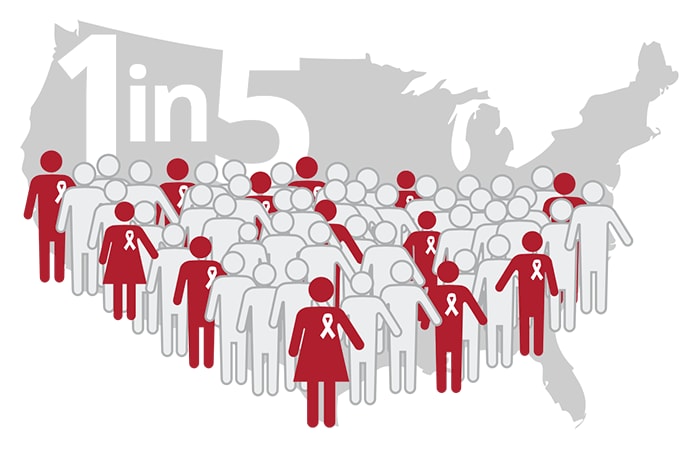Blood Clots (Deep Vein Thrombosis)
This video shares important information about blood clot signs and symptoms, as well as the risk factors for blood clots for people who are being treated for cancer.
People who have cancer now or had cancer in the past have a higher risk of getting a blood clot in a vein, which is a serious health problem.
What Is Deep Vein Thrombosis (DVT)?
Deep vein thrombosis (DVT) is when a blood clot forms in a deep vein. These clots usually form in the lower leg, thigh, or pelvis, but they can also occur in the arm. Sometimes the DVT will break off and go to the lungs. This is called a pulmonary embolism (PE).
Cancer patients, especially cancer patients who are receiving chemotherapy, have a much higher risk of DVT than other people. Patients with brain, pancreatic, stomach, and lung cancers are at the highest risk.
What Raises the Risk of DVT?
Some things can raise your risk of getting a blood clot in a deep vein. For cancer patients, the most common risk factors are—
- Injury to a vein during major surgery.
- Slow blood flow. Staying in bed for a long time can cause this.
- Having a catheter in a central vein. As many as half of cancer patients with a central venous catheter for long-term chemotherapy get DVT.
- Getting older.
- Having obesity.
See a detailed list of risk factors for blood clots with cancer and a blood clot risk checklist for cancer patients.
How Can I Lower My Risk for DVT?
Before getting surgery or having a catheter placed in a central vein, ask your doctor about medicine to lower your chance of getting a blood clot. This medicine is called an anticoagulant or blood thinner.
Wear compression stockings (tight-fitting socks or stockings) to improve blood flow in your legs.
What Are the Symptoms of DVT?
About half of people with DVT have no symptoms at all. The most common symptoms of DVT are—
- Swelling.
- Pain.
- Tenderness.
- Redness of the skin.
If you have any of these symptoms, call your doctor right away.
Call your doctor if you experience any of these signs of a blood clot in your arm or leg:
Swelling
Pain or tenderness not caused by injury
Skin that is warm to the touch
Skin redness or discoloration
What Health Problems Can DVT Cause?
Pulmonary Embolism (PE)
Part of a blood clot in a vein (DVT) can travel through the bloodstream to the lungs. This is known as a pulmonary embolism (PE). People can recover from this if the clot is small and they get the right treatment. But a large clot can stop blood from reaching the lungs, causing death. This is the leading cause of death in people with cancer after the cancer itself.
A pulmonary embolism can cause—
- Trouble breathing.
- A fast or irregular heartbeat.
- Chest pain that usually gets worse if you cough or take a deep breath.
- Coughing up blood.
- Low blood pressure, lightheadedness, or fainting.
If you have any of these symptoms, call your doctor right away.
A test called a CT scan or CAT scan may be used to find a pulmonary embolism. As many as half of all PEs in cancer patients are found in this way.
Seek immediate medical attention if you experience any of these signs of a blood clot in your lung:
Difficulty breathing
Chest pain that gets worse with a deep breath or cough
Coughing up blood
Faster than normal or irregular heartbeat
Post-Thrombotic Syndrome
Nearly one-third of people who get a DVT will have long-lasting health problems as a result. This is called post-thrombotic syndrome (PTS). PTS can cause swelling, pain, darkening or redness of the skin, and other problems. It makes the skin prone to infection (cellulitis), which can spread to the bloodstream, causing sepsis and death.
Note: DVT (a blood clot in a vein) does not usually cause a heart attack or a stroke, as it occurs in a vein. Arteries carry oxygen-rich blood from the heart to the body. A blood clot in an artery, called arterial thrombosis, can cause heart attacks or strokes.
In this video, a breast cancer survivor and several others share their stories about how they learned they had DVT and the treatment they received for it. A doctor explains the three things patients need to know to prevent DVT.
